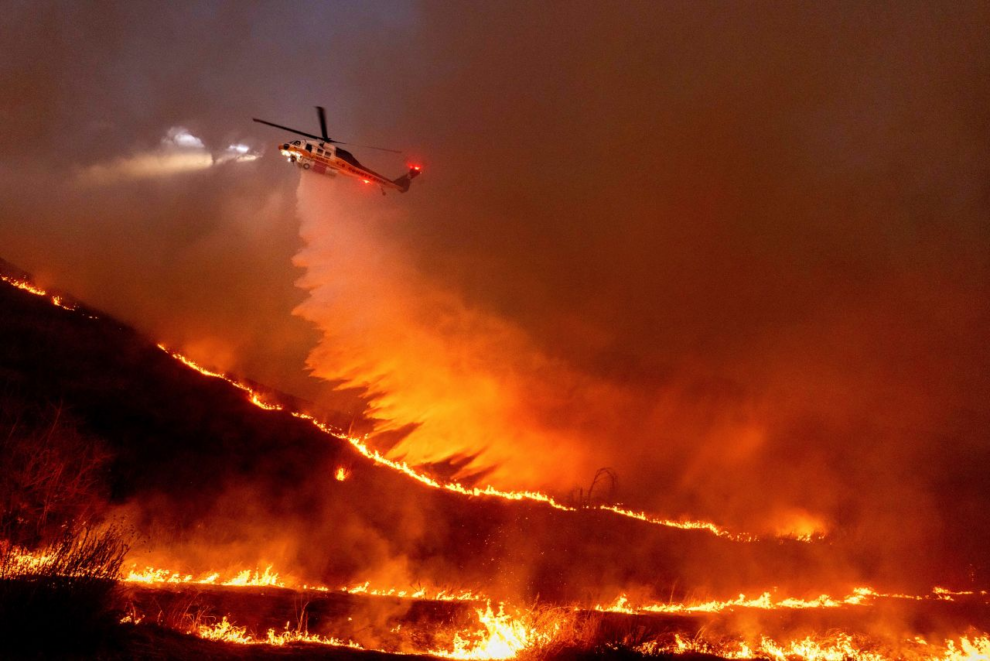As of January, wildfires in Los Angeles have burned over 27,000 acres and displaced more than 100,000 residents. The fires have already claimed five lives, highlighting the severity of California’s ongoing crisis. While the cause of these fires is still unknown, a combination of environmental factors have contributed to the rapid spread and intensity of the blazes.
One of the primary environmental factors influencing wildfires is rainfall—or the lack thereof. Los Angeles saw less than a quarter of an inch of rainfall in the last 3 months of 2024, creating extremely dry conditions. This prolonged drought has led to parched vegetation, which acts as highly flammable fuel for wildfires. When there is little to no moisture in the soil and plant life, fires ignite and spread with alarming speed, making them difficult to control.
Another major factor is powerful Santa Ana winds. These unusually strong winds originate from the high-pressure systems in the Santa Ana Canyon and move towards the coast where low pressure systems exist. The close proximity of these systems leads to winds that are much more powerful than normal, with some reaching speeds of 60-70 miles per hour. Such intense winds allow fires to move quickly, but also make firefighting efforts incredibly challenging. Embers carried by these winds can travel miles ahead of the main fire, igniting new blazes in unpredictable locations. The Santa Ana winds are notorious for transforming small flames into raging fires within hours.
Beyond immediate weather patterns, climate change has played a long-term role in worsening California’s wildfire seasons. Rising global temperatures have led to drier conditions, prolonged droughts, and higher evaporation rates, all of which increase wildfire risks. Scientists warn that if the world doesn’t take steps to limit climate change, the LA fires could become even more frequent and destructive. Hotter temperatures also contribute to extended fire seasons, meaning that what was once a seasonal occurrence may become a year-round threat.
As these fires continue to devastate communities, it is clear that understanding and addressing their causes is vital. From unpredictable rainfall patterns and extreme winds to the larger implications of climate change, multiple factors are at play. The future of wildfire prevention will depend on proactive efforts to address both immediate and long-term environmental concerns. If steps are not taken to limit climate change and improve wildfire preparedness, Los Angeles and other fire-prone regions may face even more devastating wildfires in the years to come.







